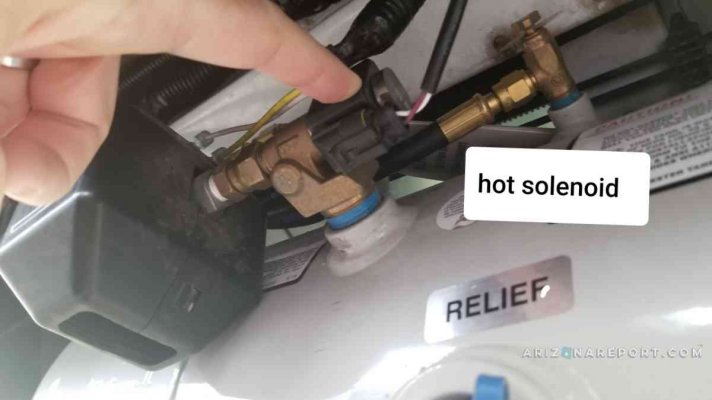ArizonaNavion
New member
I crawled underneath my 2019 Winnebago Navion last week (2,082 miles) to familiarize myself with its systems/tanks. Minutes earlier, I had turned on the 2 LP tank safety switches (inside/outside) to facilitate gas flow. While below the rig, I discovered a solenoid device on the vapor valve. This LP valve leads from the tank to the interior mechanicals (stove/furnace). This solenoid on the LP tank underneath the rig was HOT to the touch. I estimate 130F to 150F. About the temperature of black pavement on a hot summer day. Couldn't keep my fingers on it due to the heat for more than 5 to 8 seconds. The solenoid is about the size of a gaming die and silver in color. I believe that I have the "6849" model by Manchester LP tanks. Have read through all Navion/View owner's manuals and could find no reference to this issue. I found some scant references to hot LP tank solenoids in marine/boating forums online and also called the Winnebago product line 1-800-537-1885. Winnebago rep Chris was helpful and confirmed that these solenoids do warm up when in the on position. However, I thought that I would crowdsource the experience of other RV owners because something that is nearly glowing hot within a centimeter of the exterior of an LP tank seems like a dangerous scenario. The solenoid goes cold when at least 1 of the 2 LP switches is turned off. Thank you in advance. Interested to know if others have experienced the same. Photo attached of solenoid on tank.
edit by staff - changed message icon to topic solved
edit by staff - changed message icon to topic solved

